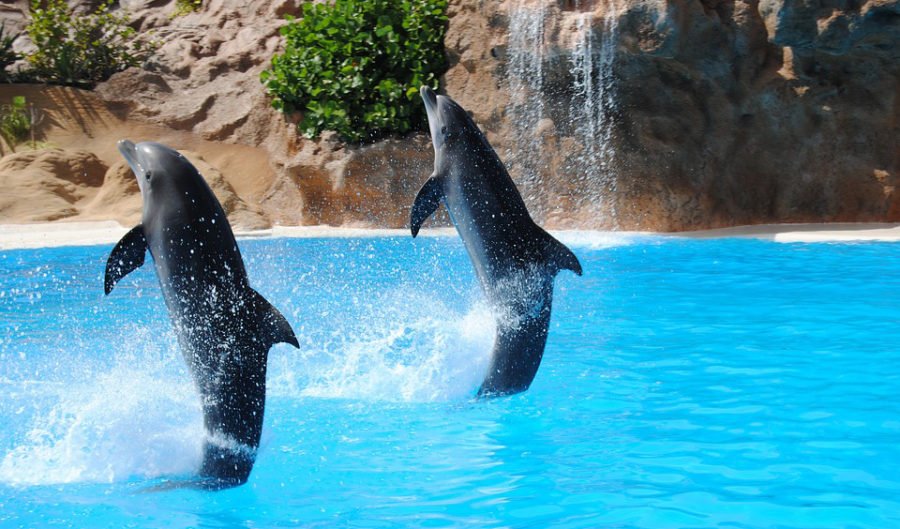The future of zoos and marine parks

THE FIRST VISITS you make to a zoo in childhood are a thrilling experience. You may remember being enthralled by meerkats, or being scared by the snakes and spiders; but it was the large mammals for which we reserved our greatest awe.
In zoos, the elephants and tigers captivate, while in the marine parks, dolphins and whales are the central attraction. Their size, athleticism, dexterity and, perhaps most of all, their intelligence hold our attention for longer than any other species. You can’t help but feel that these animals might just be able to understand and relate to you.
In aquaria around the world, dol-phins and whales are trained to display this in well-choreographed shows. These spectacles demonstrate a close bond between animal and trainer, but they also suggest human mastery of the animals. They are talked to as if in a classroom, made to perform tricks and apparently relate to their audience by splashing or waving to them. The message is clear: they want to connect with us, and we as humans have mas-tered the largest and most intelligent of our mammalian relatives. Ipso facto we must be cleverer than they are.
The animals are portrayed as apparently enjoying the interactions with their trainer and with the audience, with a select few singled out for close encounters. However, the careful observer will notice that the reward for them is simply food, with little or no evidence that they find the interactions entertaining. In fact, the restricted autonomy and poor welfare that they are forced to endure leads to occasional hostile interactions with trainers and even rare deaths.
Some of the worst incidents are well publicised, as anyone who has seen the 2013 documentary film Blackflsh — about the welfare of killer whales in captivity — will be well aware of.

A scene featuring Tilikum from the movie Blackfish.
An ethical analysis might conclude that humans have taken advantage of these animals’ natural curiosity, which functions to give them an ecological advantage in the wild. Campaigns against keeping dol-phins in aquaria have grown in success in recent years, and there is an increas-ing understanding by the public that captive management of dolphins and whales impinges on both their welfare and rights.
All of the 40 or so dolphinaria that existed in the UK four decades ago have now been closed, in favour of a growing wildlife tourism movement, principally dolphin- and whale-watching tour operators, and coastal viewing centres with interpre-tative information. Australia still has two centres offering dolphin shows, but none offering whales on display.
Last week I took my kayak to Stradbroke Island in Queensland and was accompanied for short stretches of my route by the local Indo-Pacific dolphins. This was an edifying experience, with none of the regret that would have lingered after view-ing dolphins in captivity. While the numbers of people doing this remains low, and guidelines are followed, there is little risk to the animals’ welfare, but if numbers grow, the interactions will have to be managed.
Although Australian standards for managing wildlife tourism of this nature are defined, enforcement of regulations is as yet limited, which will be a major challenge for the future.
I believe it is time for us to end the captivity of dolphins and whales as visitor attractions, and also think much more carefully about whether or not — and how — we keep other large animals in zoos.
Assuming the trend towards wild ecotourism continues, and people lose their appetite to see large mammals with questionable psychological states in captivity, what might happen to zoos without their major attractions?
A 2013 study from the USA outlined a future for zoos as educational facilities, in which they provide the chance for people to explore the local fauna of a region, as long as the species are accommodated to a welfare level that is at least as good as it is in the wild.
This may mean the animals are captive bred, not wild caught; that zoos have fewer species, and larger, more natural enclosures; and that multimedia presentations are used to imaginative effect, with an emphasis on the place of animals in their wild environment. This would require a major shift away from the role of zoos as visitor attractions that they held when we were children, and this will take time.
Ultimately, zoos as centres of learning could play a very positive role in making the public aware of our shared responsibilities to preserving the local environment and animals within it.
Professor Clive Phillips is the director of the Centre for Animal Welfare and Ethics at the University of Queensland.
READ MORE:

